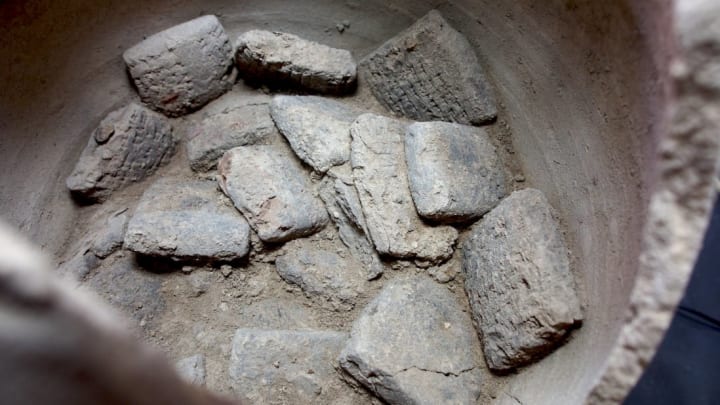In 2016, archaeologists excavating in the Autonomous Region of Kurdistan in Iraq discovered the remnants of a Bronze Age city near the modern village of Bassetki. It was large, and it appeared to have been occupied for more than 1000 years, from around 2200 to 1200 BCE. Ancient Mesopotamia, home to the earliest civilizations on Earth, had many cities. So which one was it?
The mystery remained until recently, when a language expert at the University of Heidelberg translated clay cuneiform tablets unearthed at the site in 2017. The archaeologists had discovered Mardaman, a once-important city mentioned in ancient texts, which had been thought lost to time.
The inscriptions were likely written around 1250 BCE when Mardaman (also called Mardama) was a part of the Assyrian Empire. According to the University of Tübingen archaeologists who unearthed the tablets, they describe the "administrative and commercial affairs" between the citizens of Mardaman and their Assyrian governor Assur-nasir. The account led the researchers to believe that the area where the tablets were recovered was once the governor's palace.

Situated on trade routes connecting Mesopotamia, Anatolia (modern Turkey), and Syria, Mardaman was a bustling commercial hub in its day. It was conquered and rebuilt several times, but after it was toppled by the Turukkaeans from the neighboring Zagros Mountains sometime in the 18th century BCE, it was never mentioned again in ancient texts. Experts had assumed that marked the end of Marmadan. This latest discovery shows that the city recovered from that dark period, and still existed 500 years later.
"The cuneiform texts and our findings from the excavations in Bassetki now make it clear that that was not the end," lead archeologist Peter Pfälzner said in a press statement. "The city existed continuously and achieved a final significance as a Middle Assyrian governor's seat between 1250 and 1200 BCE."
This lost chapter of history may never have been uncovered if the clay tablets were stored any other way. Archeologists found the 92 slabs in a pottery vessel that had been sealed with a thick layer of clay, perhaps to preserve the contents for future generations. The state in which they were found suggests they were stashed away shortly after the surrounding building was destroyed.
